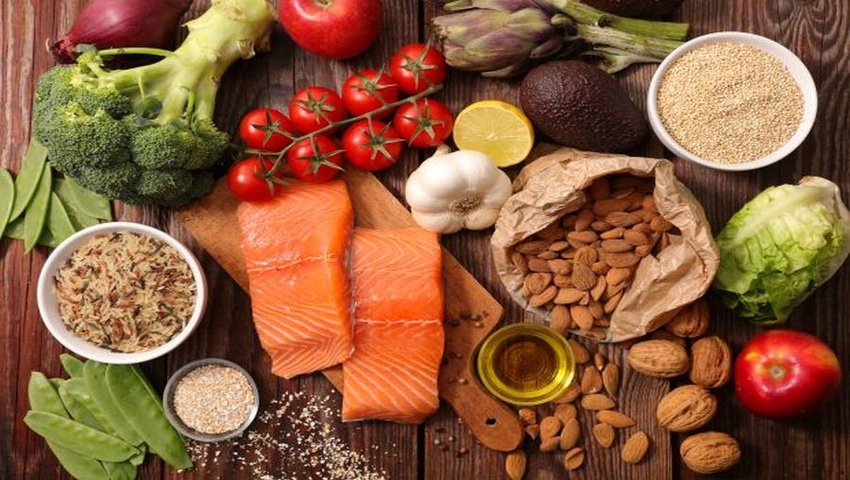The current definition has reached its expiration date in view of current nutritional science, but stakeholders differ on what foods should be qualify as “healthy."

As FDA examines how to redefine what qualifies as “healthy" on food packages, government officials have plenty to chew on. Comments from the food industry and other stakeholders poured in to FDA this week, recommending changes to the definition of healthy.
The current definition, regulators and industry executives said, has reached its expiration date in view of current nutritional science, prompting FDA to open a proceeding last year seeking comments on use of the term healthy in the labeling of human foods.
In analyzing the relevant FDA regulation, snack maker KIND discovered foods like salmon, avocados and olives could not be labeled healthy due to restrictions on fat, while products like low-fat pudding and sugar cereals met the “healthy" criteria, explained KIND’s Justin Mervis, senior vice president and general counsel, during an April 24 call with reporters.
“It’s a pretty surprising result," Mervis said, “when you juxtapose these two things, and you see that on the one hand, olives and avocados shouldn’t be labeled as healthy, but on the other, some sugary cereal and pudding can be."
Mervis explained the regulations were written in the early 1990s when the nation was focused on reduction of fat—rather than sugar—in the diet.
Over the past two decades, food packages could be labeled as healthy, provided the products contained certain minimum amounts of nutrients like vitamins and minerals, and the food met criteria for the content of cholesterol, fat, saturated fat and sodium, explained FDA officials, Susan Mayne, Ph.D., and Douglas Balentine, Ph.D., in a recent blog.
“But nutrition science has evolved," Mayne and Balentine acknowledged. “Whereas in the past we placed greater emphasis on total fat, we now know that not all fats are alike, and some are better for health than others.
“And while the focus on ensuring that people are getting the right amounts of different nutrients still matters, other things matter as well," the FDA officials wrote, “such as food groups or the combinations of different foods and beverages in the diet."
It was KIND that submitted a 2015 citizen petition to FDA, requesting the agency make changes to nutrition claim regulations—many of which related to the term “healthy." The petition was filed after FDA warned the company that some of its bars did not meet the requirements for certain nutrient content claims. (KIND later addressed FDA’s concerns.)
While documents released by the 2015 Dietary Guidelines Advisory Committee emphasized the importance of certain foods such as fruits, vegetables, lean meats and nuts, the committee concluded the majority of the U.S. population isn’t getting adequate key food groups, KIND’s citizen petition noted.
In redefining healthy, regulators must first sift through hundreds of comments submitted by food companies, health groups and others.
The comment period closed on Wednesday, April 26.
During a public meeting in March, various interests weighed in on the term healthy, highlighting the diversity of views on the subject. For instance, Mayne and Balentine noted ConAgra Foods proposed an approach that would allow for greater flexibility by ranking foods based on their nutritional makeup, while the Academy of Nutrition and Dietetics was unable to craft a definition after conferring with its members.
“There were different opinions on whether we should continue to define ‘healthy’ based solely on specific nutrients that are considered to play a role in lowering the risk of chronic disease," the FDA officials disclosed in their blog. “In that regard, some favored having the new definition continue to include certain beneficial nutrients, such as vitamins, minerals and fat. Others suggested it be based instead on beneficial food groups—such as whole grains, fruits and vegetables—while still others opted for a combination of the two."
The Academy of Nutrition and Dietetics, a century-old association of food and nutrition professionals, explained in comments filed this week with FDA that it was unable to recommend “an effective legal definition for the ‘healthy’ nutrient content claim" that would meet its labeling principles and the “significant statutory and regulatory requirements for nutrient content claims."
The filing cited philosophical differences over the objective of the healthy definition, and disagreements over whether the 2015-2020 Dietary Guidelines for Americans was focused on healthy diet patterns. The academy recommended FDA tackle certain issues before the agency proposes a new definition of healthy.
For instance, the Academy of Nutrition and Dietetics recommended consumer research to ascertain what people think of the term healthy.
“We are concerned that the term ‘healthy’ has the potential to cause consumer confusion because it seems to imply … that a single food should meet all dietary needs, which is not the case for non-medical foods," the Chicago-based organization wrote to FDA.
The Center for Science in the Public Interest (CSPI), a consumer advocacy group, wants to ensure a redefinition of healthy doesn’t allow processed foods to compete with the produce aisle.
“The word healthy should steer Americans towards fruits, vegetables and other truly healthy foods," said Lindsay Moyer, CSPI’s senior nutritionist, in a phone interview. “It shouldn’t become just a marketing ploy to allow … processed foods to compete with fruits and vegetables."
Moyer said CSPI favored FDA authorizing healthy claims on foods that contain a high amount of healthy fats, such as nuts, fish and avocados, while maintaining limits on salt, cholesterol and saturated fat.
She expressed concerns that some members of the food industry have called for food-based criteria that would allow healthy to be on foods that contain minimal amounts of fruits, vegetables, nuts or other food groups.
“We’re concerned," Moyer said, “that that kind of food-based criteria would create a huge loophole."
In comments filed with FDA, KIND laid out four principles governing the term healthy. One of its principles is that foods containing low- or no-calorie sweeteners and synthetic color additives should be excluded from the definition of healthy.
“We understand that there is considerable uncertainty and debate in the nutrition community about the short- and long-term health effects of some of these ingredients," said Stephanie Perruzza, KIND’s health and wellness specialist, during the press call.
Anne Norris, an FDA spokeswoman, declined to comment on a timeline for adopting a new definition of healthy.
“Compiling and analyzing the public comments and the accompanying information is a time and labor-intensive process and until these tasks have been completed, it’s premature for us to speculate about next steps or timing," she said via email.
Moyer of CSPI cited consensus that foods qualifying as healthy under the new definition should include “foods that we know now make up the foundation of a healthy dietary pattern," such as fruits, vegetables, nuts and lean poultry.
“We view this as an opportunity to improve the standards and make sure healthy means what it says on the food label," she said, “not to allow in more sodium, or saturated fat, or too much added sugar."
About the Author(s)
You May Also Like






.png?width=800&auto=webp&quality=80&disable=upscale)